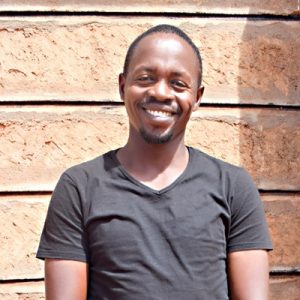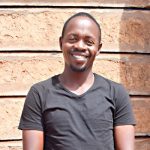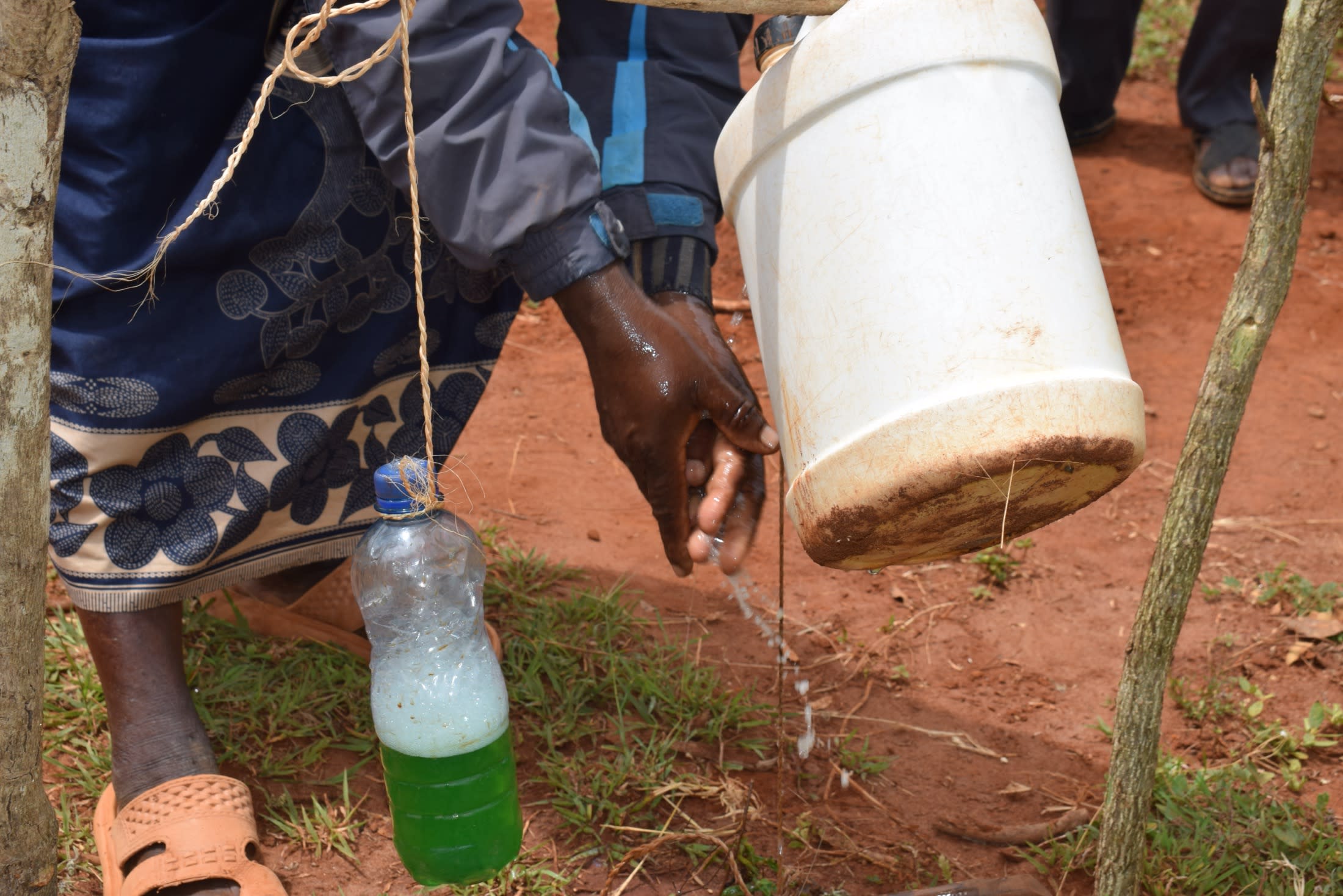The people in Kaliani travel more than two miles to the Kinze River to fetch water from scoop holes in the riverbed. That means it takes more than an hour to fetch water every day.
The distance is so far that some people have to pay others to fetch their water and carry it back using donkeys. These scoop holes are open, unprotected and prone to contamination.
Virtually no households undertake the proper steps to treat and protect drinking water, we found. This is because they believe the water sources are safe and also some find the water treatment exercise to be too time-consuming.
"I wouldn't drink this water because it is prone to contamination," our reporting officer said, after visiting the source.
This is home for Kikaka Self-Help Group, which aims to help Kitandini, Kaliani, and numerous other villages in this area of Kenya. The group is comprised of farmers who believe that if they work together to address food and water scarcity in their area, they’ll grow stronger.
This is Kikaka Self-Help Group’s first year in partnering with us, and they look forward to having a huge impact on this region. They will take part in a five-year collaboration to improve access to safe water and sanitation in the community. We are also constructing another dam and well with this group this year. Go here to learn more.
"Our children and community members have suffered a lot because of the water problem in this area. We hope that the implementation of this project will make things better," Mr. Mwakavi Kimeu said.
Most households have latrines, but the ones we visited were in poor shape. The floor looked as if it might fall in at any moment and the roof was leaking from recent rains. As a result, some people in this community practice open defecation - something that poses a health risk to everyone here.
This area is quite a drive from our main office. It’s 133 kilometers of easy driving on a highway through Wote Town, but then it gets difficult: 44 kilometers on bumpy, hilly Murram Road.
It is a rural, peaceful area. Most of the households dotting the terrain are made of brick walls and dirt floors.
What we plan to do about it:
Our main entry point into Kaliani Community has been the Kikaka Self-Help Group, which is comprised of farming households that are working together to address water and food scarcity in their region. These members will be our hands and feet in both constructing water projects and spreading the message of good hygiene and sanitation to everyone.
Training
We’re going to continue training the self-help group members and their communities on hygiene and sanitation practices. Most households in the area have a pit latrine, but these have been constructed poorly and are dangerous after heavy rains. The handful of families who do not have a bathroom facility use the privacy of brush in their immediate area. The trainer also plans to focus on water treatment, garbage disposal, and keeping a clean environment.
Sand Dam
Building this sand dam at a spot further down the river in Kaliani will bring water closer to hundreds of other people. After the community picked the spot, our technical team went in and proved the viability by finding a good foundation of bedrock. Now, our engineers are busy drawing up the blueprints. We estimate the dam will be 56.1 meters long and 3.9 meters high.
We are unified with this community to address the water shortage. As more sand dams are built, the environment will continue to transform. As the sand dams mature and build up more sand, the water tables will rise. Along with these sand dams, hand-dug wells (check out the hand-dug well being installed next to this dam) will be installed to give locals a good, safe way to access that water.
With these projects, clean water will be brought closer to people in Kaliani.

 Sand Dam
Sand Dam
 Rehabilitation Project
Rehabilitation Project




































